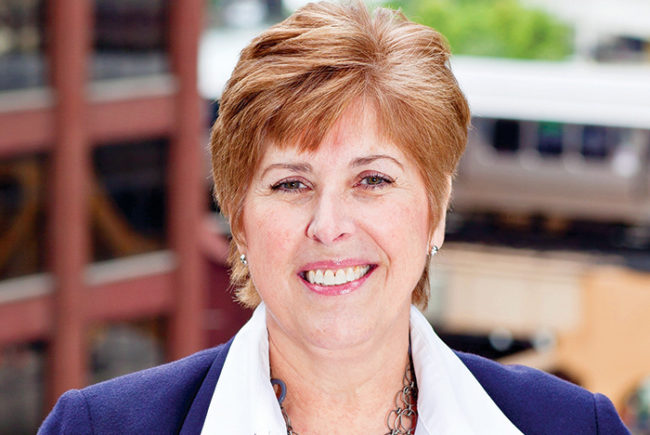
The O'Neill File
CV
- Vice president of facilities, design & construction, Robert Wood Johnson University Hospital (RWJ Barnabas Health), New Brunswick, N.J.
- Senior director of facilities, Pennsylvania Hospital (Penn Medicine), Philadelphia.
- Director of engineering, Pennsylvania Hospital (Penn Medicine).
- Senior project manager, Penn Medicine, Philadelphia.
- Project manager, Healthcare Studio, VITETTA, Philadelphia.
- Architect, Department of Veterans Affairs (VA) Medical Center, Philadelphia.
- Engineering technician, VA Medical Center, Philadelphia.
Current affiliations
- International Code Council Committee on Healthcare, current chair (vice chair, 2011 to 2022).
- Facility Guidelines Institute Health Guidelines Revision Committee, 2026 cycle, outpatient document group member.
- American Institute of Architects’ Academy of Architecture for Health, codes and standards committee member.
- American College of Healthcare Architects.
- Certified Health Care Facility Manager.
- ASHE Senior status.
Education
- Bachelor of Architecture, Catholic University of America, Washington, D.C.
Jeffrey O’Neill, AIA, CHFM, ACHA, is chair of the International Code Council’s (ICC’s) Committee on Healthcare. In this month’s interview, he discusses his journey from health care planning and design to overseeing engineering and operations and how it has informed his participation in the code development process.
How did you get your start in health care facilities planning and design?
When I graduated college in 1991, it was very difficult to find a job in architecture. I didn’t find my first job until 1992, when I started at the Department of Veterans Affairs (VA) hospital in Philadelphia as an engineering technician. Part of the job was to do some drawings and small-scale work, but also to help maintain the VA’s life safety plans and work on various programs for veterans, such as sitting in on the Home Improvement/Structural Alteration committee meetings and helping plan ramps and accessible bathrooms. That was both my first job out of school and my first experience working in a hospital.
How did your transition into operations inform your view of the design side?
After I left the VA, I went on to work at a design firm, largely doing planning work and construction implementation. From there, I got a job working in the project office at Penn Medicine; it was there that I learned that the decisions you make on a capital project, which can last 50 years or more, will impact the facilities managers of that building for all that time.
Specifically, I was working on a big ambulatory project at one of the sites in Philadelphia on the Pennsylvania Hospital campus. I was the project manager for Penn Medicine, and around that time I transitioned to a director of engineering role at the same hospital. After the project was completed and I took over the building’s management and maintenance, I gained a different perspective on a lot of the design decisions and realized what could have been done to better preserve the life of the building. So having experience in both informs each one — making improvements when you have the opportunity with the capital, but also making the right decision when you have that capital to sustain the life of the building.
What are some of your most significant takeaways from serving on the ICC Committee on Healthcare?
The committee initially formed in 2011 as an ad hoc committee of the ICC to bring the International Building Code (IBC) and the International Fire Code (IFC) into alignment with the National Fire Protection Association’s NFPA 101®, Life Safety Code®. These codes are created by separate publishing organizations that have separate audiences for their work; the ICC codes are basically model codes for localities to adopt and modify to suit their needs, whereas the Life Safety Code is adopted by the Centers for Medicare & Medicaid Services and is a national code. Aligning the two is important because they were previously on separate tracks and went out of alignment in a lot of areas. It could be costly to a health facility to always follow the higher standard of the two, and even more so to correct it to meet up if something was missed. Serving on the committee really underscored the importance of this alignment when it comes to the regulatory codes.
I’ve also come to appreciate that these codes contain years of concentrated wisdom from the brilliant people involved in the code development process. There’s a staggering amount of brain power that goes into writing the letter of the code, and it gives you the basis to provide the safest building you possibly can have.
How did chairing the ICC’s International Existing Building Code (IEBC) committee compare to chairing the Committee on Healthcare? What aspects of serving on that committee interested you most?
The biggest difference between the Committee on Healthcare and the IEBC committee is that the Committee on Healthcare is more of a support committee. The Committee on Healthcare, similar to ICC’s Building Code Action Committee (BCAC) and Fire Code Action Committee (FCAC), gets together to evaluate the codes and advocate for changes. The IEBC committee is a cyclical document review committee, and document committees hear the arguments from the Committee on Healthcare or BCAC and FCAC, along with the ICC membership and interested parties. I was intrigued by being on the document committee side of the process and the rigor that it involved.
What really drew me to the IEBC itself was handicap accessibility in existing buildings, which is run through that document. Hospital buildings all have generations of smaller buildings coming together as a campus, so the IEBC addresses directly how to comply with accessibility standards in those older buildings. In my role at Penn Medicine, I also dealt with historic preservation, and there are whole chapters in the IEBC on historic buildings. The campus I worked on at Penn Medicine has a building on the National Register of Historic Places, the Pine Building, which is the first hospital building in the country. Serving on the IEBC committee gave me some insights on how to manage that building and also put me in a position to offer some direction on the code based on my personal experience with the building.
What are some of the current priorities for the Committee on Healthcare? Can you discuss some of its recent wins?
The current focus of this committee is to maintain the alignment that it achieved over the four cycles since it was formed in 2011. We’re always looking at locking arrangements; big ones that come to mind are for man traps, like the ones that are used in behavioral health settings and mother/baby units. But really, the bigger wins came earlier in the process. One of the first major wins was around dampers in ductwork that was fully sprinklered. Since the early 1990s, the Life Safety Code didn’t require a damper in a smoke zone barrier if a building was fully sprinklered. Since 2015, that requirement has been included in the IBC and International Mechanical Code, which brought them into alignment for the first time. As of the 2024 edition of the IBC, we have achieved alignment around allowing lay-in ceilings to be considered smoke tight. So those are two instances where requirements became aligned with the IBC.
But just as important are the things we added into other codes to strengthen the requirements for hospitals to match them up with the existing building chapter in the Life Safety Code. We established an entire chapter, Chapter 11 of the IFC, to address retroactive requirements for a hospital, which is to say that no matter how old the building is, you can’t grandfather your way out of the need to comply with these requirements. That applied to everything from how to use a Dutch door, to the integrity of the barriers, to the alarm systems, to travel distances, to suite sizes — everything you can think of, we put into the code to strengthen it and make sure it matched up. That really demonstrated to the ICC community that we’re not here to boil the code down or take requirements out, but we’re here to strengthen it where it needs to be strengthened and have some commonality for requirements coming down the road. All of that is to say, I’m very proud of the Committee on Healthcare’s work in making the safest health care buildings we possibly can.
Landon Hegedus is assistant editor of Health Facilities Management magazine.





